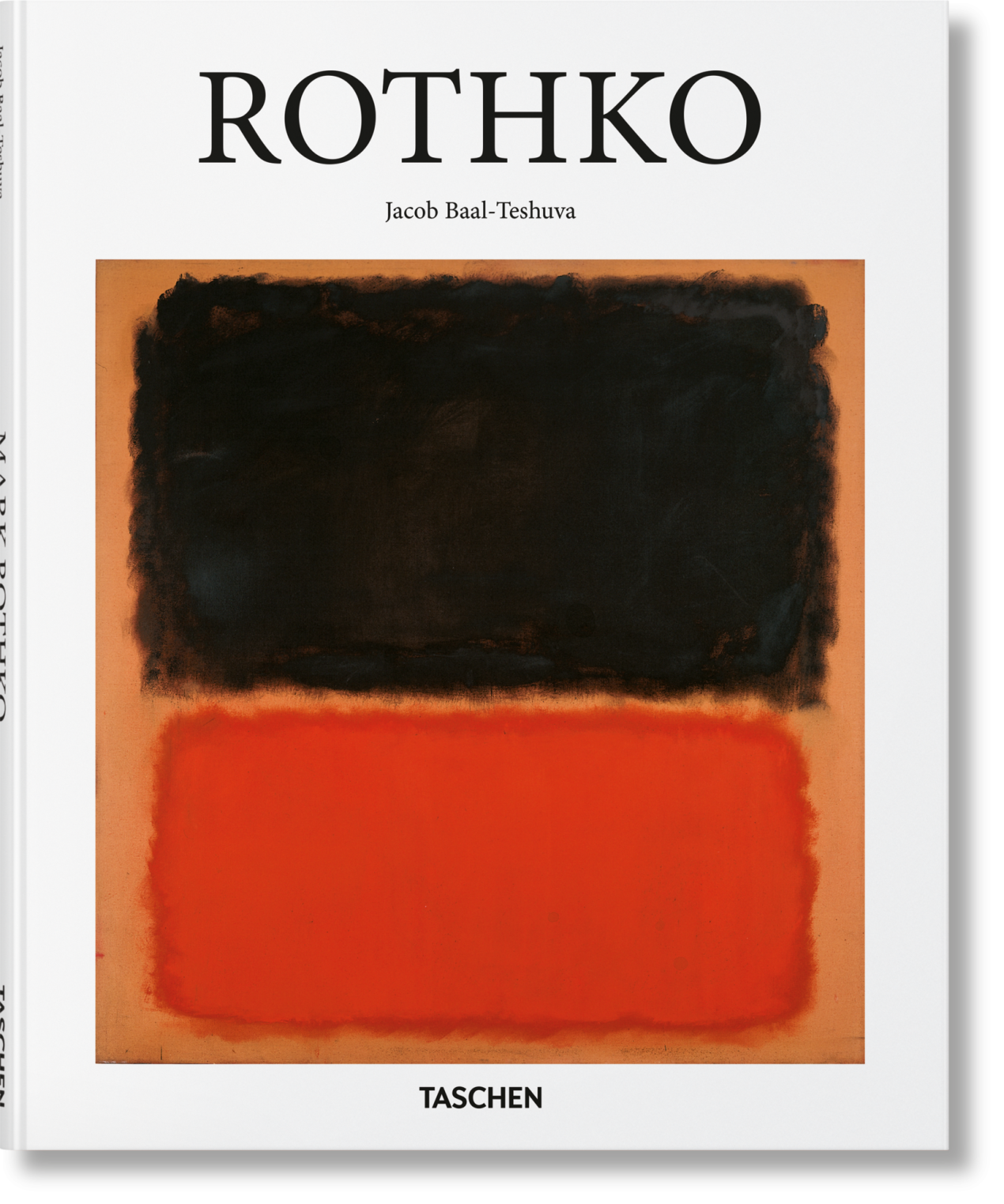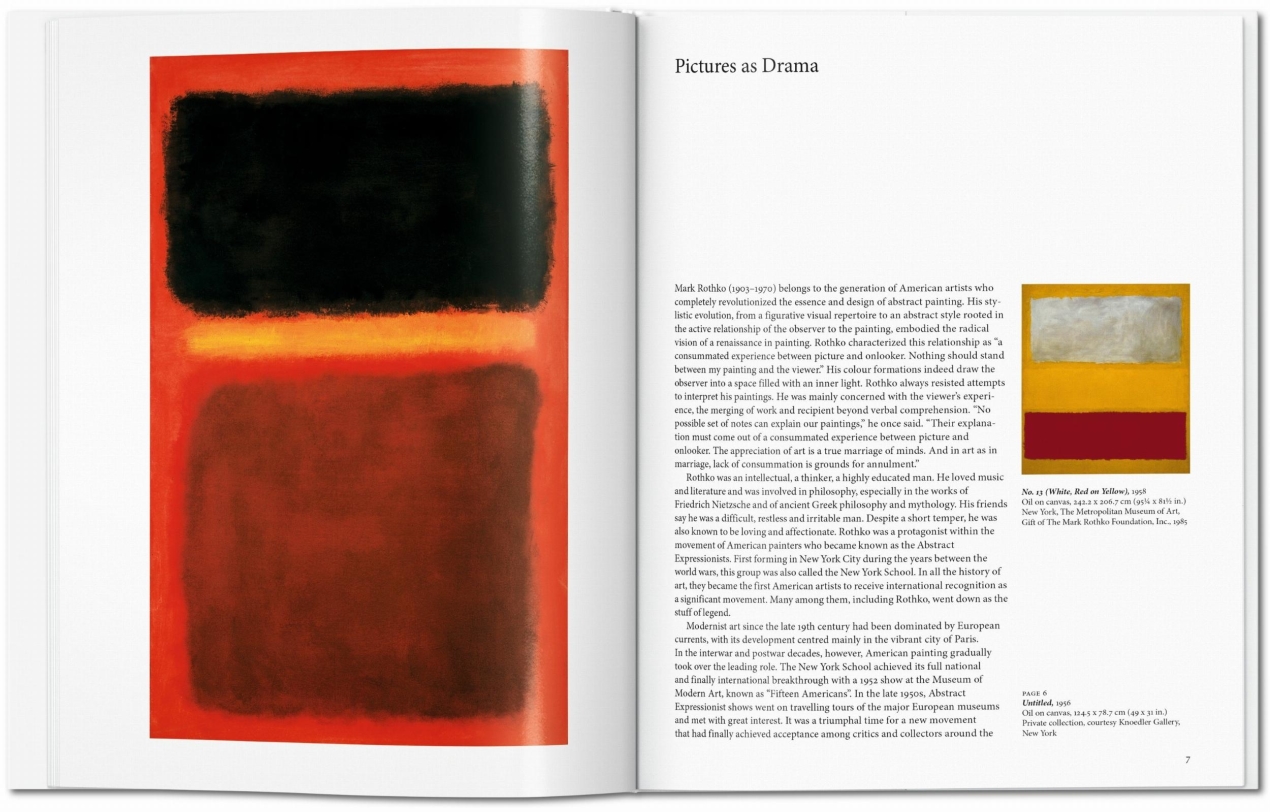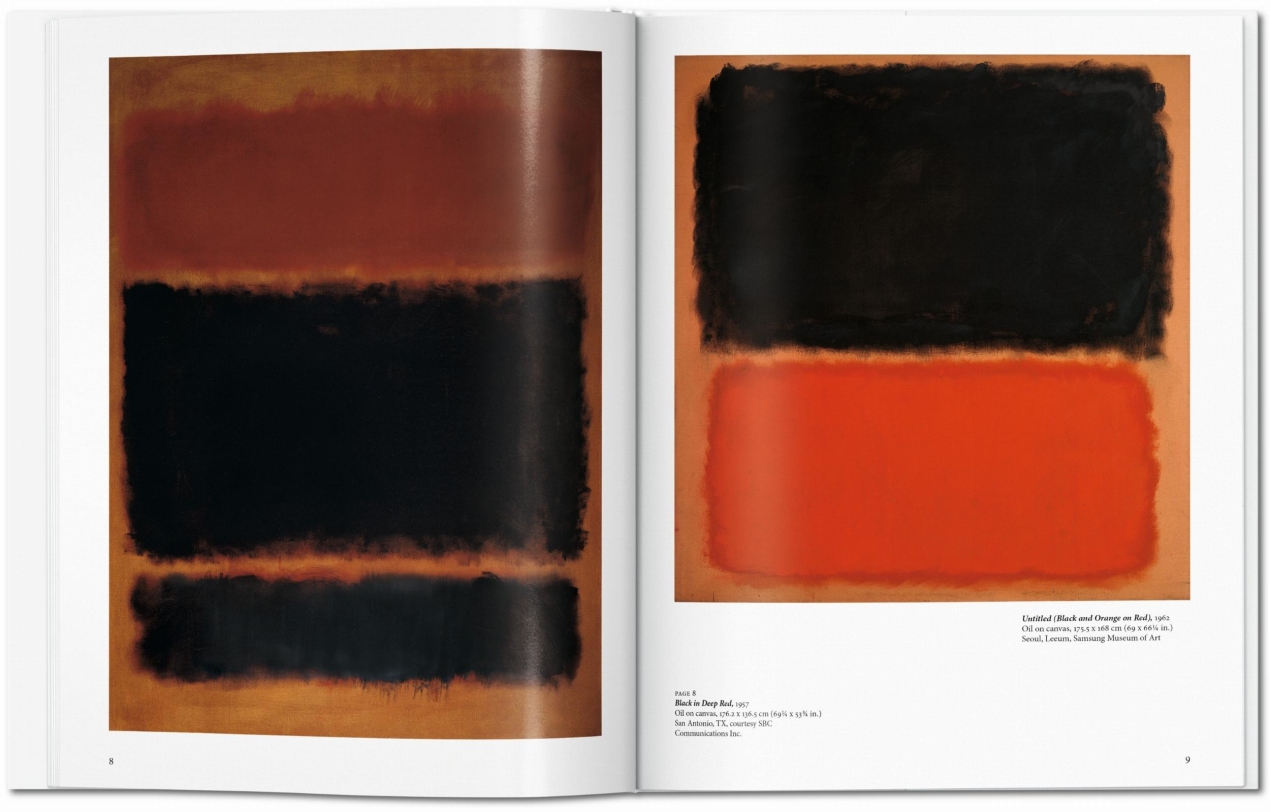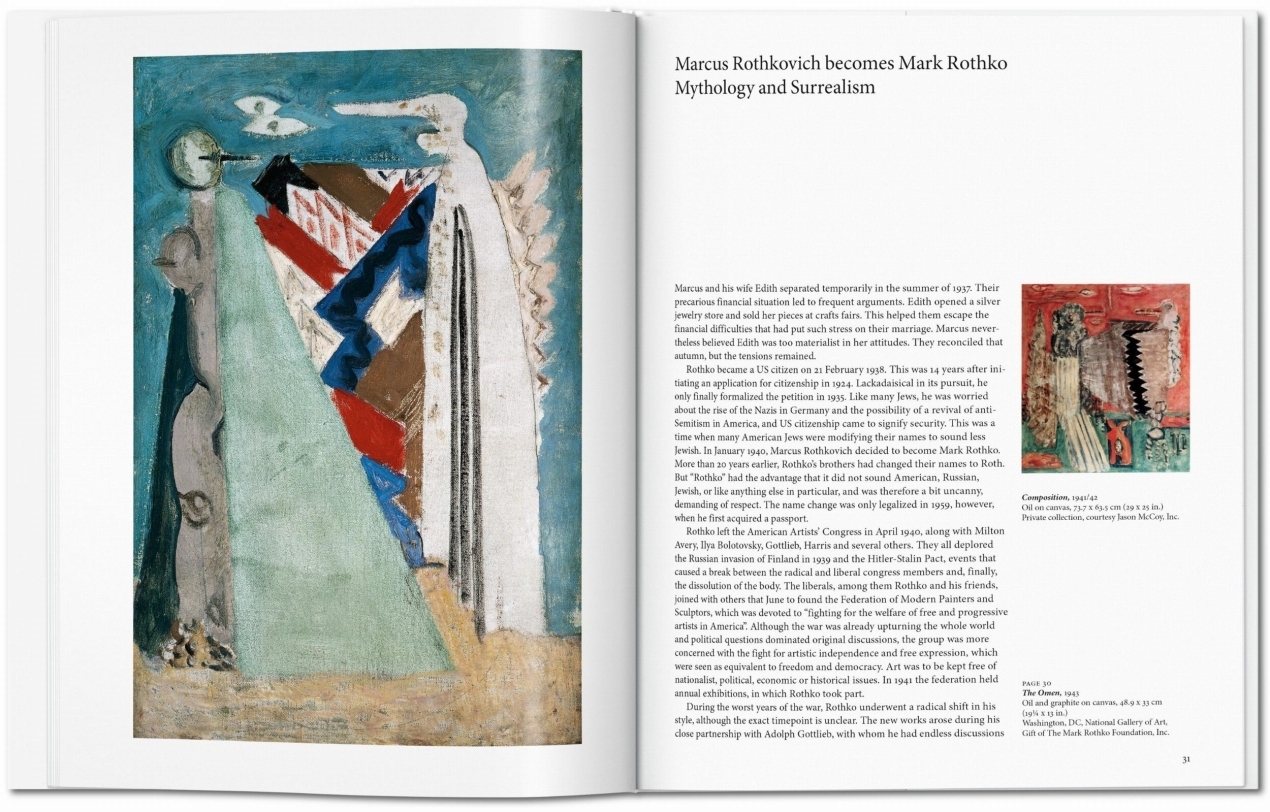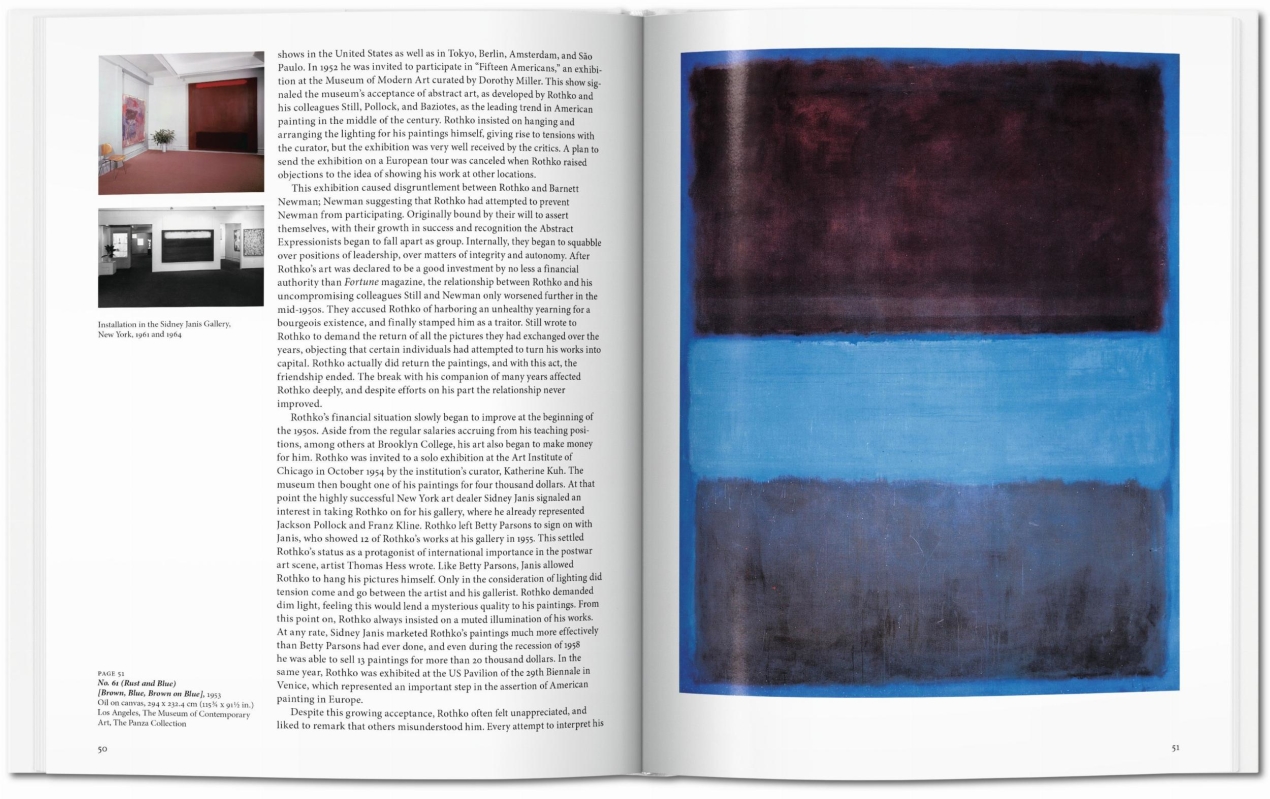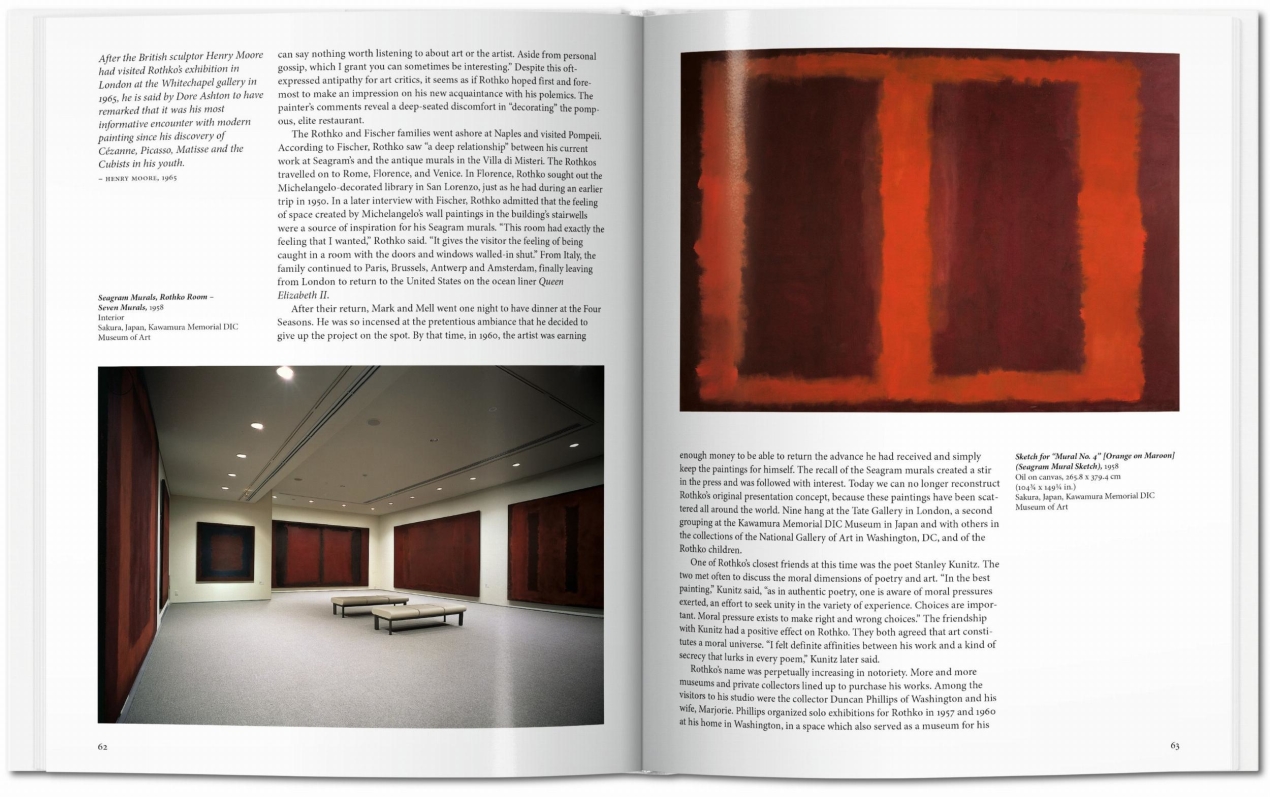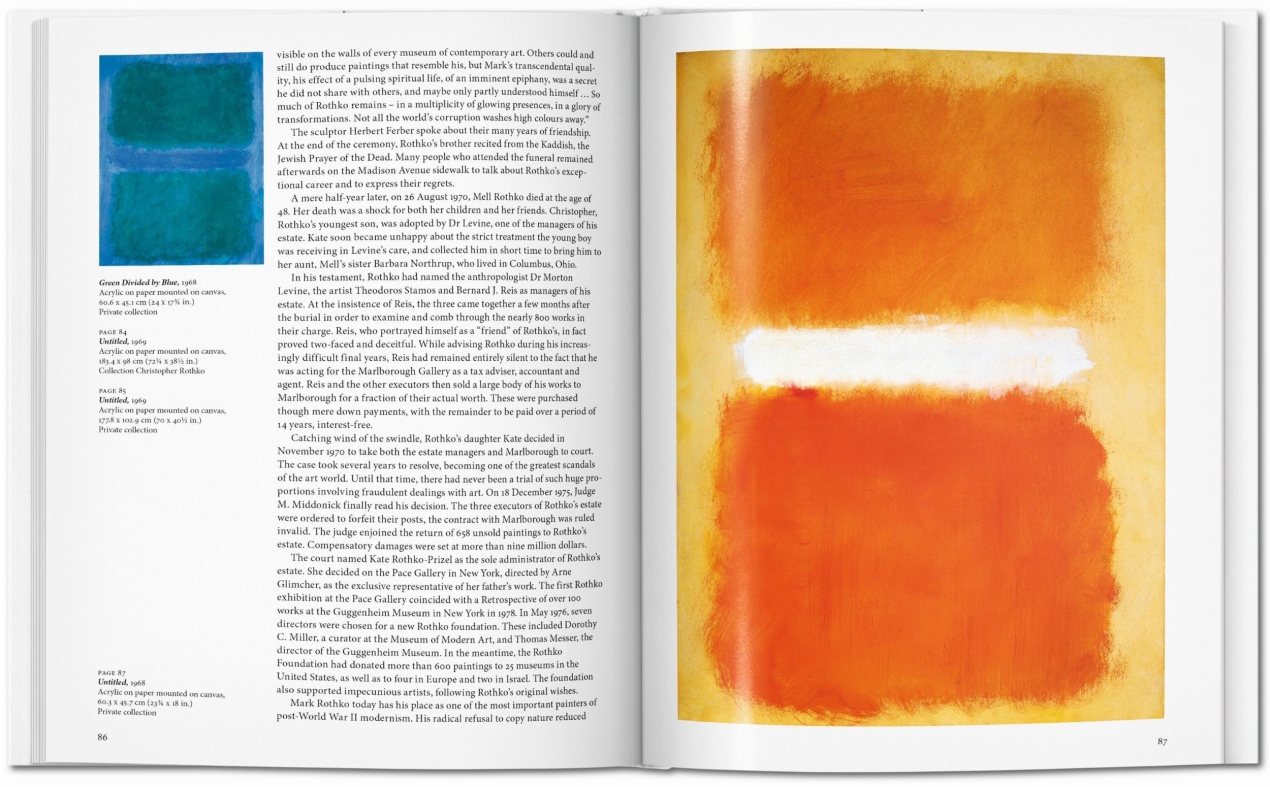1 / 7
Rothko
20
Masse di colore scintillanti e pulsanti caratterizzano i capolavori dell'Espressionismo astratto di Mark Rothko. Come nessun altro artista della sua generazione, Rothko sviluppò un proprio vocabolario stilistico, creando tele alte fino al soffitto che dovevano essere vissute più che viste, immergendo gli spettatori nel dramma, nell'intimità e nella tragedia della condizione umana.
Copertina rigida, 8.3 x 10.2 in., 1.38 lb, 96 pagine

Rothko
20Pictures as drama
Tragedy, ecstasy, and doom
Resisting interpretation or classification, Mark Rothko (1903–1970) was a prominent advocate for the artist’s consummate freedom of expression. Although identified as a key protagonist of the Abstract Expressionist movement, first formed in New York City, Rothko rejected the label and insisted instead on “a consummated experience between picture and onlooker.”
Following a repertoire of figurative works, Rothko developed his now iconic canvases of bold color blocks in red, yellow, ochre, maroon, black, or green. With these shimmering, pulsating color masses, Rothko stressed that he had not removed the human figure but rather put symbols or shapes in its place. These intense color forms contained all the tragedy of the human condition. At the same time, Rothko explicitly empowered the viewer in the expressive potential of his work. He believed “A picture lives by companionship, expanding and quickening in the eyes of the sensitive observer.”
From his early development through to his most famous color fields, this book introduces the intellect and influence of Rothko’s dramatic, intimate, and revolutionary work.
Following a repertoire of figurative works, Rothko developed his now iconic canvases of bold color blocks in red, yellow, ochre, maroon, black, or green. With these shimmering, pulsating color masses, Rothko stressed that he had not removed the human figure but rather put symbols or shapes in its place. These intense color forms contained all the tragedy of the human condition. At the same time, Rothko explicitly empowered the viewer in the expressive potential of his work. He believed “A picture lives by companionship, expanding and quickening in the eyes of the sensitive observer.”
From his early development through to his most famous color fields, this book introduces the intellect and influence of Rothko’s dramatic, intimate, and revolutionary work.
L'autore
Jacob Baal-Teshuva (1929-2022) è stato autore, critico e curatore di mostre indipendente. Per TASCHEN ha pubblicato opere su Marc Chagall, Andy Warhol, Alexander Calder, Jean-Michel Basquiat, e Christo e Jeanne-Claude. J
Rothko
Copertina rigida, 21 x 26 cm, 0.63 kg, 96 pagineISBN 978-3-8365-0426-3
Edizione: IngleseScarica qui le immagini del prodotto
Nata nel 1985, la serie Basic Art è diventata la collezione di libri d’arte più venduta al mondo. Ogni libro della serie Basic Art di TASCHEN contiene:
• una cronologia dettagliata riassuntiva della vita e delle opere dell’artista, inserito nel contesto storico e culturale in cui è vissuto
• una biografia concisa
• circa 100 illustrazioni con didascalie esplicative
5
27 marzo 2024
Well done17 febbraio 2024
Amazing product.
Beautiful book and photos.
SUPER WELL wrapped and protected!
